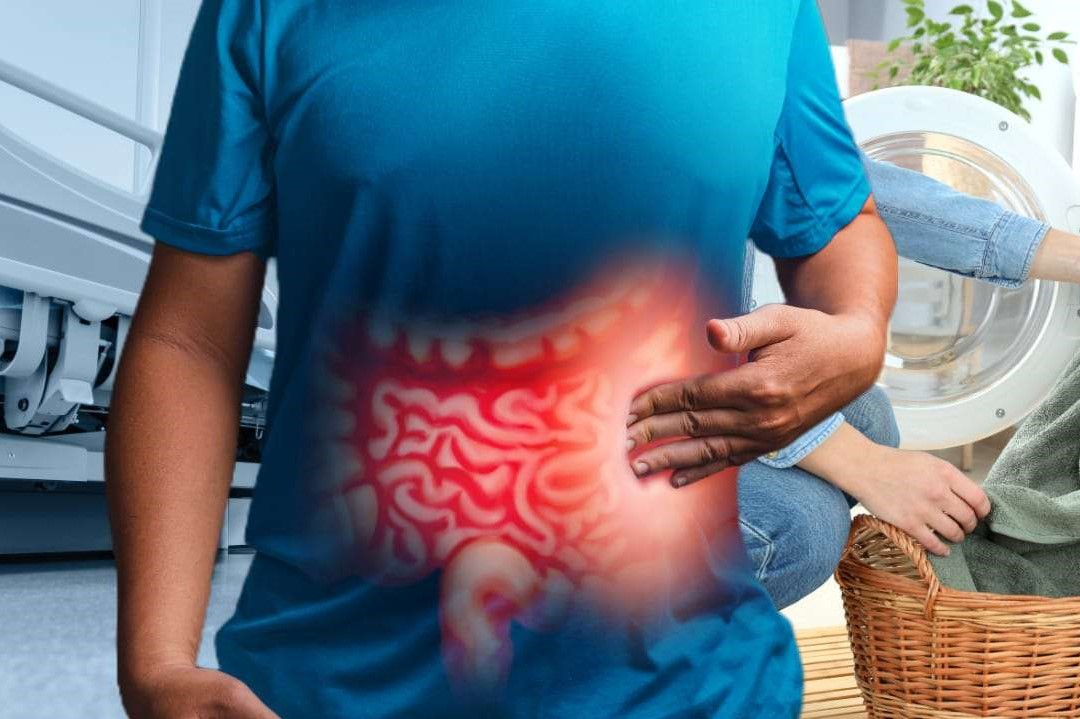
Bowel disorders, ultrasound of the intestinal loops for diagnosis
The symptoms associated with intestinal disorders can be diverse. In general, patients present with abdominal pain often correlated with altered alvo, i.e. bowel function (diarrhoea or constipation) and in some cases, patients also report the presence of blood in the stool
Sometimes disorders of the upper intestinal tract and thus nausea and vomiting are also associated.
All these complaints are alarm bells that should not be underestimated and from which appropriate investigations should begin.
In the presence of these symptoms it is a good idea to first consult the gastroenterologist, who will direct the patient to the most appropriate examinations for diagnosis.
Intestinal disorders, tests for diagnosis
The simplest test is a blood sample, which allows us to detect any alteration in the haemochrome (an increase in white blood cells or a reduction in haemoglobin if there is blood loss), or inflammation factors; or patients who complain of abdominal pain, diarrhoea and bloating could have coeliac disease, and in the blood we can look for specific antibodies for this type of disease.
We can then use the breath test, the Breath test, which allows us to assess various conditions; the Lactose Breath test, for example, allows us to diagnose lactose intolerance: the patient ingests a marked substance, and through breathing, we ascertain the absence of the enzymes that digest milk, the lactases.
Ultrasound of the intestinal loops
This is a simple and painless examination that uses a linear probe that goes less deep (therefore, it is unsuitable for overweight and/or obese patients), but allows an accurate definition of the structures explored, namely the walls of the intestine.
We can thus assess any thickening of the intestinal wall (which may occur as a result of inflammation or infection as in gastroenteritis), pathological dilatations of the intestinal loops, but also the presence of lymphadenopathy and/or abdominal fluid.
This examination makes it possible to study the small intestine, in particular the last ileal loop and follow all the walls of the colon, assessing the contents of the colon itself, such as gas or faeces; often patients suffering from abdominal pain have colic due to the excessive presence of gas in the intestine and thanks to this examination we can distinguish this type of pain (of a functional nature) from a pain linked to an underlying pathology and a state of inflammation (of an organic nature).
With the ultrasound scan of the intestinal loops, it is also possible to assess the possible presence of diverticulosis and, above all, diverticulitis, also thanks to the use of colour-echo-Doppler, which makes it possible to establish whether the walls of the intestine are more vascularised than normal, this being an indication of inflammation.
Ultrasonography of the intestinal loops is also a useful complementary tool in the diagnosis of coeliac disease: thickening or dilation of the intestinal loops, the presence of lymphadenopathy and/or effusion in the pelvic cavity, and increased peristalsis are all signs suggestive of coeliac disease.
Finally, in suspected appendicopathy/appendicitis, ultrasound of the intestinal loops can be a valuable tool for visualising the appendix by studying whether it is increased in size, vascularised or associated with enlarged lymph nodes and/or effusion.
Irritable bowel syndrome, tips for proper nutrition
Irritable bowel syndrome presents with abdominal pain associated with altered bowel movements (diarrhoea or constipation).
This disorder in predisposed individuals may be linked to the excessive production of gas linked to diet: it is therefore necessary to pay attention to the diet, reducing the consumption of sugars and carbohydrates, the so-called Fodmaps.
In the case of constipation, hydration is essential, it is also important to maintain stable mealtimes and regular physical activity.
It is also good to ensure a diet rich in fibre, with vegetables, wholegrain cereals, yoghurt with milk enzymes; it is better to avoid red wine, astringent fruit, dry foods and complex foods that can slow intestinal transit and encourage constipation.
In the presence of diarrhoea, on the other hand, it is necessary to limit the consumption of fibre, drink plenty of water and favour the consumption of astringent foods, including starches (potatoes) which thicken stools and improve this condition.
Read Also:
Emergency Live Even More…Live: Download The New Free App Of Your Newspaper For IOS And Android
Oxyuriasis, What Causes Oxyuriasis Infection
Peptic Ulcer, Often Caused By Helicobacter Pylori
Peptic Ulcer: The Differences Between Gastric Ulcer And Duodenal Ulcer
Wales’ Bowel Surgery Death Rate ‘Higher Than Expected’
Irritable Bowel Syndrome (IBS): A Benign Condition To Keep Under Control
Ulcerative Colitis: Is There A Cure?
Colitis And Irritable Bowel Syndrome: What Is The Difference And How To Distinguish Between Them?
Irritable Bowel Syndrome: The Symptoms It Can Manifest Itself With
Can Stress Cause A Peptic Ulcer?
What Are The Differences Between Diverticulitis And Diverticulosis?
Irritable Bowel Syndrome (IBS): A Benign Condition To Keep Under Control
Gastroesophageal Reflux: Causes, Symptoms, Tests For Diagnosis And Treatment
Non-Hodgkin’s Lymphoma: Symptoms, Diagnosis And Treatment Of A Heterogeneous Group Of Tumours
Helicobacter Pylori: How To Recognise And Treat It
A Baby’s Gut Bacteria May Predict Future Obesity
Sant’Orsola In Bologna (Italy) Opens A New Medical Frontier With Microbiota Transplantation
Microbiota, The Role Of The ‘Gate’ That Protects The Brain From Intestinal Inflammation Discovered
Peptic Ulcer, Symptoms And Diagnosis
Diverticula: What Are The Symptoms Of Diverticulitis And How To Treat It


